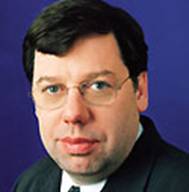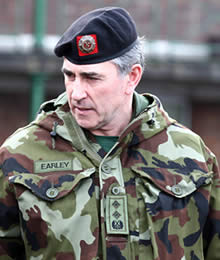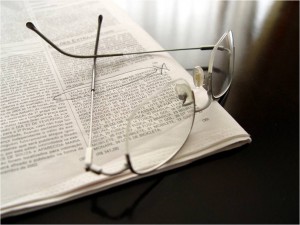 Given the furore over Brian Cowen’s interview on RTE’s Morning Ireland and the ensuing media meltdown, one might be forgiven for assuming that our Prime Minister might have more quickly understood the nature of the difficulty in which he found himself.
Given the furore over Brian Cowen’s interview on RTE’s Morning Ireland and the ensuing media meltdown, one might be forgiven for assuming that our Prime Minister might have more quickly understood the nature of the difficulty in which he found himself.
However, given the Taoiseach’s initial reaction in describint the tweet as “pathetic and pitiful” and his very late apology for not giving his “best performance” on Morning Ireland, it would appear that he only came to this understanding after considerable rumination on the matter and, one assumes, much prompting on the part of his media advisors.
So, what was the Taoiseach’s crime? Simon Coveney, the opposition TD whose tweet became headline news, did not accuse Brian Cowen of either being drunk or of having a hangover, but of *sounding* halfway between the two. Brian Cowen’s initial response – and those of most of his Ministers “methinks protested too much” when they lept to the defence of “a new low in Politics”, i.e. the suggestion that the Taoiseach was either drunk or hungover.
As Brian Cowen initially dismissed criticism of his interview, Micheal Martin was the only Government Minister to acknowledge that the Taoiseach’s performance was less than should be expected of country’s leader. His cabinet colleagues, defaulted to defending the Taoiseach, come hell or high water. Their knee-jerk reaction displayed their shared lack of understanding as to what the Taoiseach’s real failure was that morning.
It really doesn’t matter whether the Brian Cowen was drunk, hungover, hoarse from singing, exhausted from running the country, or any other possible explanation for his poor performance on Morning Ireland. What is important is that the Taoiseach thought it acceptable to attempt to communicate with a significant portion of the electorate in a manner which was less than acceptable and without explanation.
When Cathal Mac Coille thanked the Taoiseach for “coming over before your breakfast”, Brian Cowen should have made reference to his poor voice and, perhaps, explained it as the consequence of singing the night before. Any comments subsequently made about the quality of the interview could be answered by the Taoiseach’s own explanation. The issue would never have become the media sensation that developed later.
This was an appaling communications gaffe, made worse by an inability to recognise it as such. This was the real crime – not the possible cause of the Taoiseach’s performance, or lack of it.
The Taoiseach’s real crime
Journalism skill set remains the same
 Journalism is still about the core skills, despite the importance of digital media and converging newsrooms.
Journalism is still about the core skills, despite the importance of digital media and converging newsrooms.
A recent survey on the impact of digital media on journalism reported that only 14% of some 770 journalists surveyed across 22 countries said that their publications have no digital formats whatsoever.
This increasing role of digital channels in newsrooms means that not only are journalists under more pressure, but that they must be increasingly flexible about what they do. Some have suggested that the demands of converging newsrooms mean that the skill set of those who produce the news must be radically different to those of their predecessors.
Certainly, today’s journalists must be able to handle the technologies available to them and they must be aware of the format in which their content will be consumed. They must also be able to maximise the opportunities now available to them to increase the value of their output.
However, the fundamental skills of journalism, in identifying a news angle, presenting the core of the story simply, knowing how to usefully progress a story, etc., will always be of greater importance than any digital skills. Some articles such as this one from Not on the Wires, continue to remind us of the essential aspects of the profession which distinguish it as such. It will always be possible for a good journalism to learn to work well with the technologies; it is not always possible that someone who is a technological wizard can become a good journalist.
The good news is that, according to the Oriella Digital Media survey, almost half of the journalists they spoke to found that working with digital media improved the quality of their output.
Journalism – profession or disease?
As third level journalism institutions release the results for graduating students, those who have worked hard to achieve these grades are very aware that the working world in which they enter is a very different place to the one that existed when they started their degrees three years ago.
It will be undoubtedly more difficult for these graduates to find permanent work than their predecessors. In addition, they will be expected to work harder, smarter and be more flexible than ever before. Rationalisation across converging newsrooms has meant that it is those who can most, not necessarily better, will find favour. It is difficult to prepare journalists with this skill set within an academic environment, which can really only be honed in a working environment.
Such a situation recalls the debate as to how we should best prepare our journalists for the role. Traditionally, journalists learned their craft at the coalface – as apprentices to experienced practitioners, often in provincial newspapers across the country.  In recent years, an increasing number of those joining the profession have done so via a university degree in journalism before ever entering a newsroom.Â
The debate as to how much of the necessary skills of the role can best be provided at college, rather than on-the-job, has continued for many years. A letter to the Editor of The Dublin Evening Mail in 1908, dismissing the role of universities in that regard, contended that  “The whole mistake arises from the gratuitous assumption that journalism is a profession. As a matter of fact, it is not so much a profession as a disease. It can be caught – not taught. Knack-presses the button and experience does the rest.â€Â
DCU, under the direction of Professor John Horgan (now Press Obudsman), was the first Irish third-level institution, in modern times, to provide a university qualification in Journalism. The success of that programme – and of the graduates of what is now the MA in Journalism – should be testament to the university route at DCU and elsewhere. That said, the next few years will call for a greater reliance on experiential knowledge, expertise and innovation – on top of formal learning, which is now virtually a sine qua non for entry to the profession. There are some challenging times ahead.
No such thing as bad publicity?
Fine Gael seems to have, once again, proved its detractors wrong by demonstrating the truth of Brendan Behan’s belief that “there is no such thing as bad publicityâ€.
Despite endorsing the current leadership only days after the majority of their front bench declared a lack of confidence in Enda Kenny, Fine Gael improved its position in the latest RED C survey for the Sunday Business Post, reclaiming its position as the most popular party in the country.
On the face of it, this is hard to understand, particularly comparing FG to a corporate entity: Senior key figures in an organisation publically declare their lack of confidence in the manner in which the organisation is being managed / led and demand change at the top. No such change occurs, yet public perception of, and support for, the organisation increases.
It is understandable that Enda Kenny’s support would rise, having seen off an attempt to topple him. He has clearly demonstrated several leadership attributes in doing so. But what has motivated further support for a party that has clearly demonstrated its divisions and the (at best) uncertainties of its senior members in the abilities of the person they would offer as Taoiseach?
Was it simply that the media spotlight shone on the party and its frontbench, providing an opportunity for members of an alternative cabinet to shine? Was it purely a matter of greater brand recognition, given the saturation media coverage during the attempted heave?
“There is no such thing as bad publicity†is often quoted without identifying the source. As it happens, those words are only part of the quotation. The full quotation from Behan is “There is no such thing as bad publicity except your own obituaryâ€. As close as this was to being Enda Kenny’s political obituary, it came closer still to burying Fine Gael’s chances of leading the next Government. Maybe the Borstal Boy was right. Time will tell.
Dermot Earley’s handshake
 Throughout the tributes paid on the recent death of Lt Gen Dermot Earley was a reference to the former Chief of Staff’s handshake.
Throughout the tributes paid on the recent death of Lt Gen Dermot Earley was a reference to the former Chief of Staff’s handshake.
Major General Sean McCann, who succeeded General Earley as Chief of Staff of the Defence Forces, referred to latter’s handshake as his “calling cardâ€. Colleagues from the sports pitch, where he had demonstrated skills as a leader and team player, also remembered that calling card: “He had that famous handshake that made you feel that little bit more important, and you knew it was sincere…,†remarked former Roscommon Senior footballer, Seamus Hayden. There were many other memories of that handshake.
Clearly, Dermot Earley communicated so much through his handshake. It is an example of how much one can say without words; how one can express a presence; how one can exude sincerity, confidence and assuredness. The impact of his handshake remained with you long after he had left.
In a world increasingly reliant on digital communication, either socially or in a commercial context, how are we to identify and develop ways in which we can make as powerful connection with others as Dermot Earley did with his handshake? Should we expect that such a thing might be possible?
As we continue to develop new means of digital communication, perhaps we have to accept that there are elements of what we can achieve face-to-face, that can never be replicated electronically. Non-verbal communication accounts for the vast majority of how we communicate in person. To date, even the ubiquitous emoticons are poor cousins.


